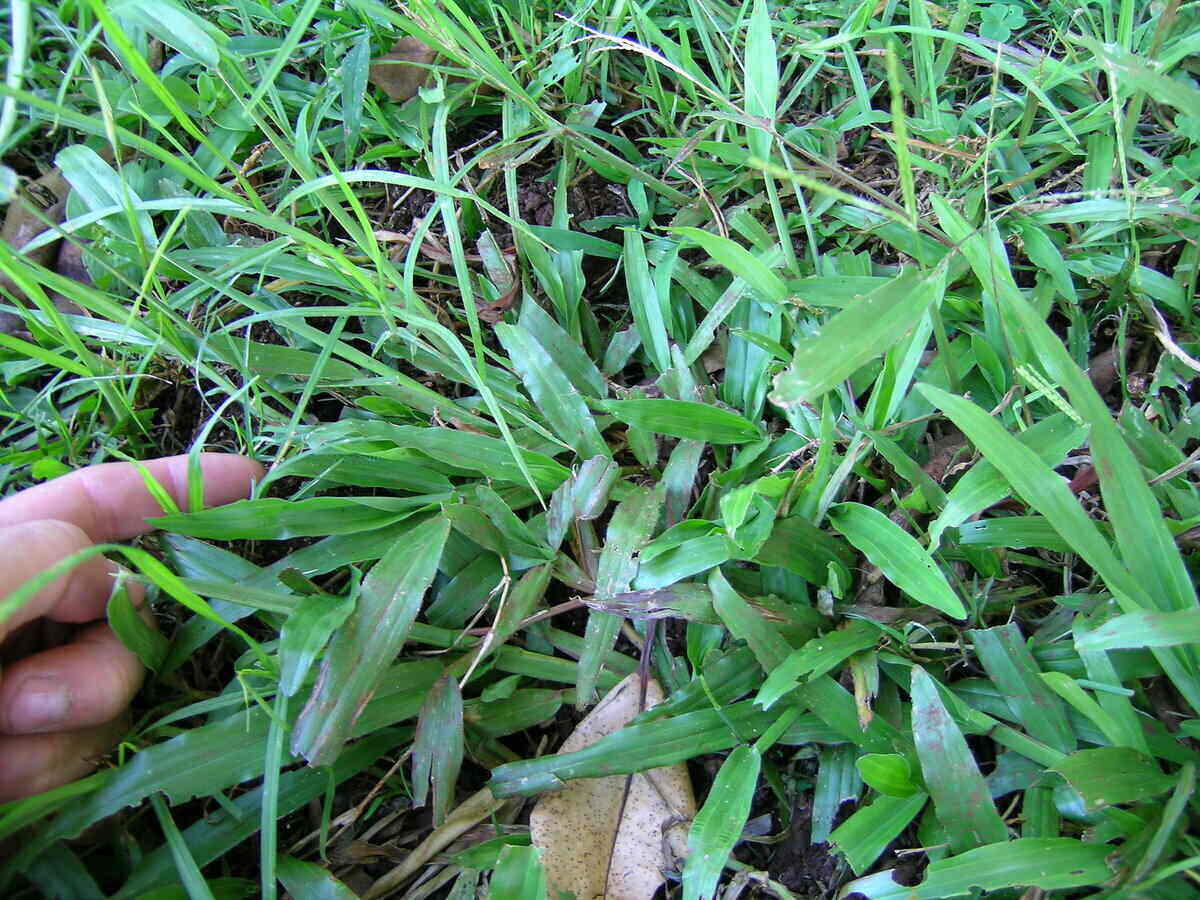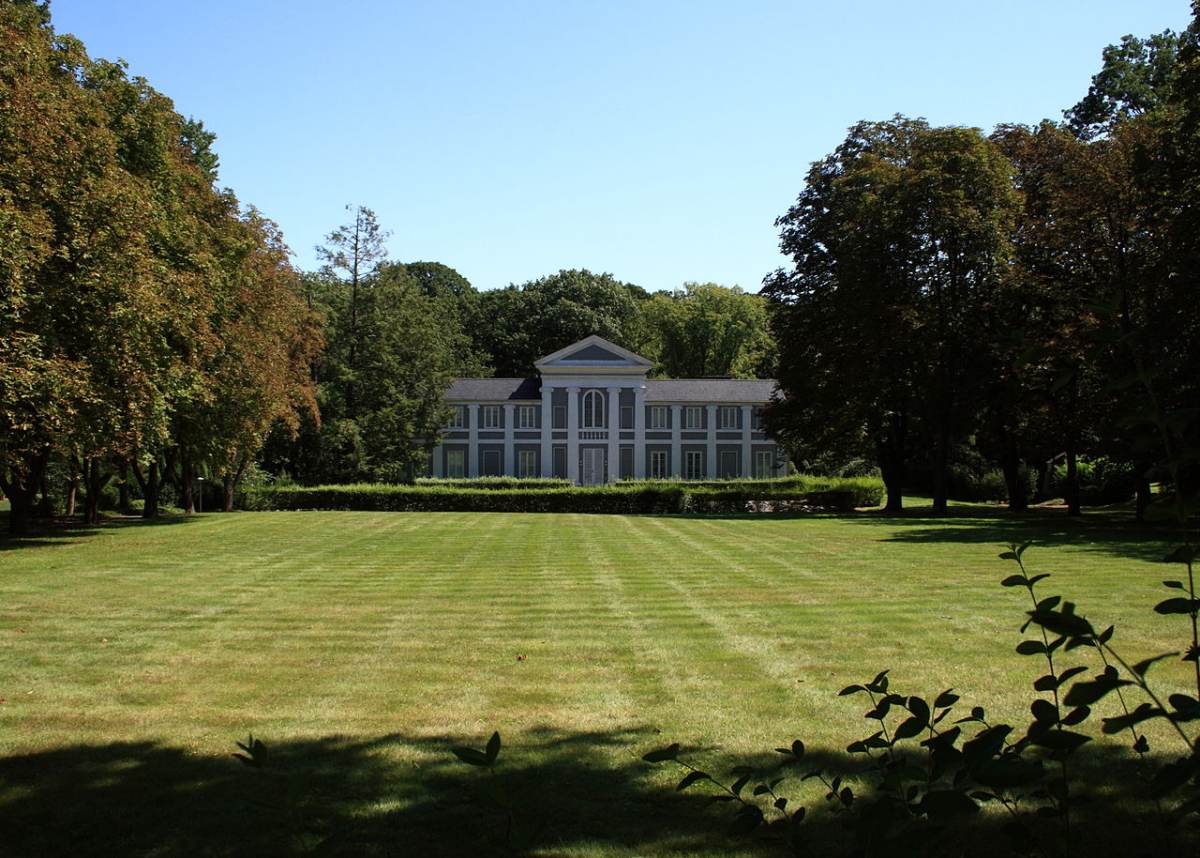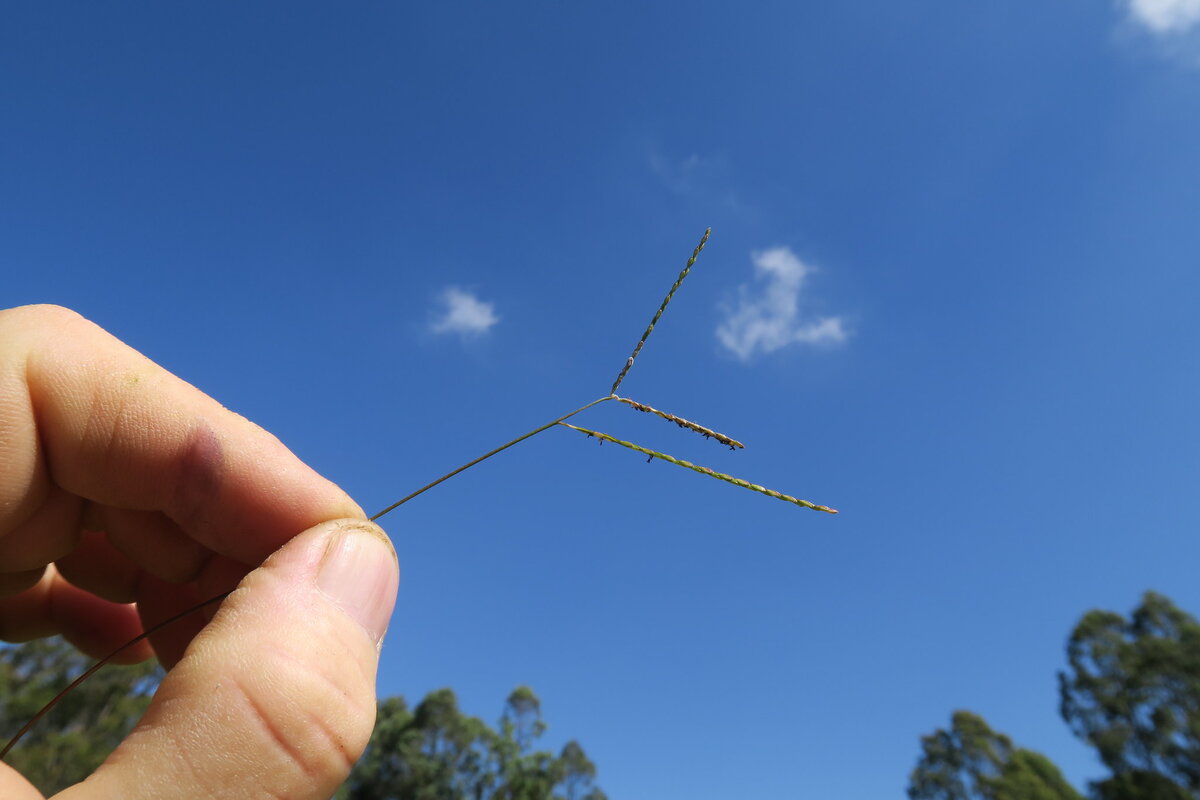
It’s a lawn — it’s a weed — it’s both? It’s carpetgrass! Carpetgrass is either a low-maintenance warm-season turfgrass or a grassy weed, depending on whether you planted it on purpose or not.
Are you considering planting carpetgrass seed for your new lawn? This guide is where you’ll find everything you need to know about it, from the pros and cons to tips for planting.
Carpetgrass Basics
Carpetgrass is a warm-season grass type, which means it grows in the southern part of the United States. It’s most common from Arkansas to Virginia in the North and from East Texas to Florida in the South. Like all warm-season grasses, carpetgrass grows most actively through late spring and summer and goes completely dormant in winter.
Also known as Louisianagrass, flatgrass, and petit gazon, carpetgrass was introduced to the United States in the early 1800s through Louisiana’s port of New Orleans. Whatever you call it, carpetgrass spreads through above-ground stems or “runners” called stolons. It has a light green color and a medium texture, between coarse and fine.
There are two main types of carpetgrass:
- Narrowleaf carpetgrass (scientific name Axonopus affinis or Axonopus fissifolius) is the carpetgrass type most often used for lawns because it’s more aesthetically appealing and doesn’t spread as aggressively.
- Broadleaf carpetgrass (scientific name Axonopus compressus) is coarser and has broader leaf blades. Broadleaf carpetgrass spreads so rapidly that it’s usually a weed rather than a turfgrass.
Pros of a Carpetgrass Lawn
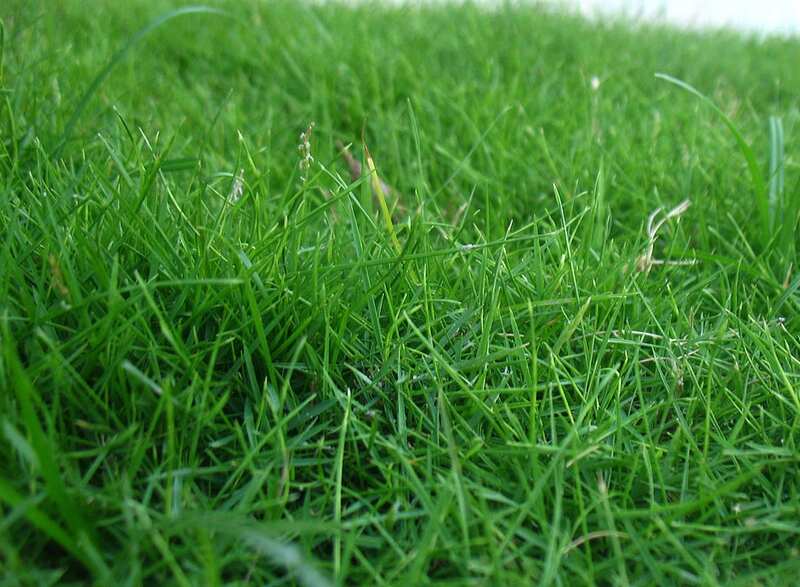
Photo Credit: Sugeesh / Wikimedia Commons / CC BY-SA 3.0
Let’s start with why carpetgrass might be the best choice for your lawn. These qualities make it low-maintenance and able to survive where many other turfgrasses can’t.
✓ Survives in Poor Soil Conditions
Most homeowners who choose a carpetgrass lawn don’t have much other choice. Their soil might be inhospitable for all grass types except this one.
Carpetgrass thrives in:
- Low-fertility, sandy soils that lack many essential plant nutrients
- Acidic soils with a pH of 5 – 6 (find out your soil pH with a soil test)
- Wet soils that drain poorly and rarely dry out all the way
If your soil has any of these problems, carpetgrass is the easiest option for your lawn. To grow another grass type successfully, you would have to add soil amendments (such as compost for drainage or agricultural lime to adjust pH) regularly. You can see how carpetgrass would save you a lot of time and money over the years.
✓ Shade-Tolerant
Shade is another area where carpetgrass shines. Most warm-season grasses have little to no shade tolerance and must get at least six hours of direct sunlight per day. This limits turfgrass choices for homeowners who live in the South but get a lot of shade in their yard (those with sweeping, thousand-year-old southern live oaks, for example).
Enter carpetgrass, one of the more shade-tolerant warm-season grasses. It still needs some sunlight, of course, but it can survive in shady areas better than, say, Bermudagrass. In this case, too, you might choose a carpetgrass lawn because the amount of shade in your yard gives you few other options.
✓ Requires Little to No Fertilizer
With a carpetgrass lawn, you can get away with not fertilizing. That’s why cities often use this type of grass for parks, roadsides, and other areas that need greenery but won’t get regular maintenance.
If your carpetgrass grows thin and sparse, you may need to apply some nitrogen fertilizer. But you only need about 1/2 to 1 pound of nitrogen per 1,000 square feet of grass. Two applications per year, one in late spring and one in early fall should be plenty.
✓ Crowds Out Weeds
Carpetgrass forms a dense mat and spreads to fill gaps, so it doesn’t leave much room for weeds to sprout. This is another low-maintenance feature because it means less weeding for you.
If weeds encroach on your carpetgrass, they can be difficult to manage because carpetgrass is sensitive to many herbicides. Check whether a herbicide is safe for carpetgrass before using it on your lawn.
✓ Helps With Erosion Control
Dense grasses like carpetgrass help to prevent soil erosion. Soil erosion is the process of wind and rain weathering away topsoil. A lack of topsoil will prevent you from growing grass or plants in that spot.
Soil erosion is especially a problem on slopes and sites with certain soil types, especially silty soils. So, if you have a hilly yard or erosion-prone soil, carpetgrass might be a good choice for you.
Cons of a Carpetgrass Lawn
Even though it has a leg up on other grass types in some ways, carpetgrass has many shortcomings as a lawn. These are the reasons it isn’t a very common grass for home lawns.
✗ Unattractive Seed Heads
Carpetgrass produces tall seed heads or seed stalks during summer that can make your grass look weedy and unkempt. These seed stalks pop up about every five days, and they will quickly grow up to 12 inches tall if you don’t mow them down. Unfortunately, they’re tough and can be difficult to cut with some mowers.
✗ Needs Frequent Mowing
To prevent those unsightly seed heads from littering your lawn, you should cut your carpetgrass lawn at least every five days during summer. If you mow less frequently than that, the seed heads will be much harder to cut down.
✗ Not Drought-Tolerant
Carpetgrass loves moist soil, and it doesn’t do well in drought. During dry periods, especially in summer, carpetgrass will need irrigation. If your area is prone to drought, carpetgrass probably isn’t the grass type for you — unless you want a higher water bill from running sprinklers regularly.
Soils that drain quickly are bad for carpetgrass for the same reason. If you plant carpetgrass in fast-draining soil, you’ll have to water it frequently.
✗ Short Green Period
Carpetgrass has poor cold hardiness, too. It goes dormant and turns brown at the first onset of cold weather in fall, earlier than most other turfgrasses. Carpetgrass also takes longer than most grasses to green up in spring after winter dormancy.
What this means: If you want a carpetgrass lawn, you’ll have to resign yourself to brown grass for a good chunk of the year, especially if you live in the northern part of its range.
✗ Poor Salt Tolerance
Carpetgrass is found throughout the Gulf Coast states, but it does not tolerate high levels of salt well. It requires moist soil, but salt can leach moisture from the soil, which makes it challenging for the plant to grow. If you plan to plant carpetgrass, it is recommended that you test your soil for salt content first.
✗ Susceptible to Pests and Diseases
All grasses are somewhat susceptible to harmful lawn pests and fungal lawn diseases, but carpetgrass tends to have these problems more often than others. Some of its most common diseases are brown patch, leaf spot, and Pythium root rot. Mole crickets, white grubs, and plant-parasitic nematodes are some of the pests that can cause severe damage.
The damage caused by various pests and diseases will depend on how severe the infestation is. One of the most common symptoms is grass turning yellow and then brown as it gradually dies. You may have to apply fungicides or pesticides regularly to prevent these issues in carpetgrass.
How to Plant Carpetgrass
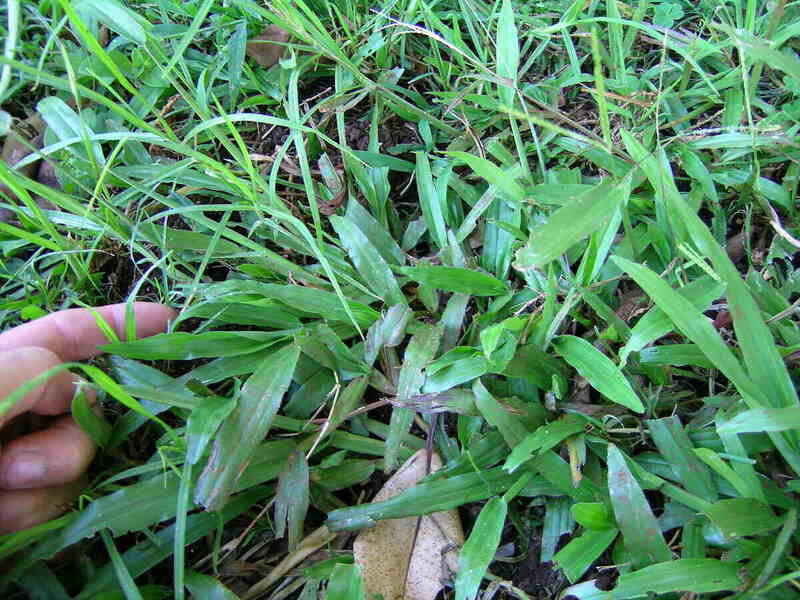
If you’ve decided carpetgrass is right for your yard, follow these tips to start off your new lawn on the right foot.
- Plant carpetgrass in spring after the last expected frost in your area. In most places, you should be good to go by mid-April.
- Spread about 2 pounds of carpetgrass seed for every 1,000 square feet of ground you want to cover.
- Water carpetgrass frequently for the first 8 – 10 weeks after planting. Don’t let the soil dry out during this period when the grass is establishing its roots.
- Fertilize the new grass at a rate of about 1 pound of nitrogen per 1,000 square feet if you want the grass to establish faster.
Where to buy carpetgrass seed: You may be able to find carpetgrass seed at a local gardenh center. If not, it’s available from online seed suppliers such as Hancock Seed Company, Seed World, and Seed Ranch.
How Much Does Carpetgrass Cost?
Carpetgrass seed typically costs $12 – $22 per pound, depending on where you buy it from, the quality of the seed, and how much of it you’re buying. Buying in bulk usually results in a better value.
Remember, you’ll need to spread carpetgrass seed at a rate of 2 pounds per 1,000 square feet. So, using the average cost of $17 per pound, you can estimate that you’ll spend about $34 for every 1,000 square feet of yard you want to cover with carpetgrass.
How Do You Maintain Carpetgrass?
North Carolina State University has a yearly maintenance schedule for carpetgrass on its Extension website. Some of the key points for carpetgrass care:
- Mow your carpetgrass lawn to a height of 2 inches, and don’t let it get taller than 2½ inches.
- Use a rotary mower for best results, cutting down the seed heads.
- Select herbicides carefully if you get weeds because many of them will damage carpetgrass.
- Remove the thatch layer with a power rake or vertical mower if the thatch becomes thicker than 1/2 inch.
- Don’t fertilize until June at the earliest.
FAQ About Carpetgrass
Is Bermuda a Carpetgrass?
No. Bermudagrass and carpetgrass are separate grass species with different site preferences and care requirements. Bermudagrass and carpetgrass have some things in common, including their ability to spread and the fact that they can be a weed in some scenarios.
How Do You Prevent Carpetgrass?
If you are on the other side of the fence and want to get rid of carpetgrass as a weed, using herbicides and preventing it from getting water are two options. There are also steps you can take to prevent it from growing in your lawn in the first place:
- Mow your lawn regularly to prevent the carpetgrass from producing seed heads.
- Apply pre-emergent herbicides to prevent the seeds from germinating.
- Improve your lawn health by providing proper irrigation, fertilization, and aeration. A healthy lawn can better compete with carpetgrass and other weeds.
Is Carpetgrass a Buffalograss?
No. Once again, buffalograss is its own separate grass type. Buffalograss has spreading and weediness in common with the other grass types mentioned here (carpetgrass, Bermudagrass, and Zoysia).
The Carpetgrass Decision: To Plant or Not to Plant?
In general, there are better choices for your lawn than carpetgrass. Carpetgrass doesn’t make for an attractive lawn, especially if you let the seed heads grow unchecked. And it doesn’t stay green for very long each year, which is a major downside.
However, carpetgrass can save the day if your yard has certain conditions that make growing healthy grass difficult (such as infertile soil, poor drainage, lots of shade, etc.). A lawn that looks a little weedy or turns brown early in the year is better than no lawn at all.
Call in the Pros
Your new carpetgrass needs a lot of mowing, but you don’t have to do it all yourself. Help from LawnStarter’s local lawn care pros is only a click away.
Main Photo Credit: Harry Rose / Flickr / CC BY 2.0

